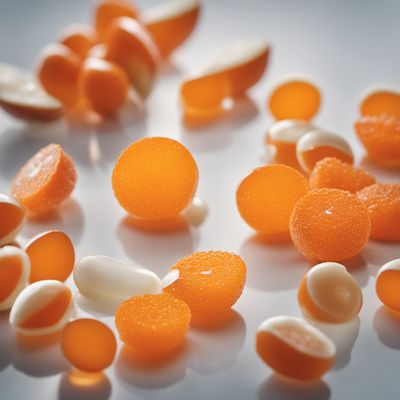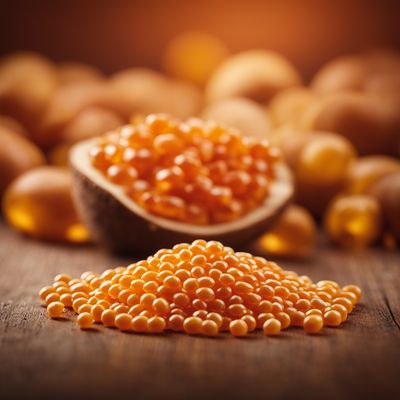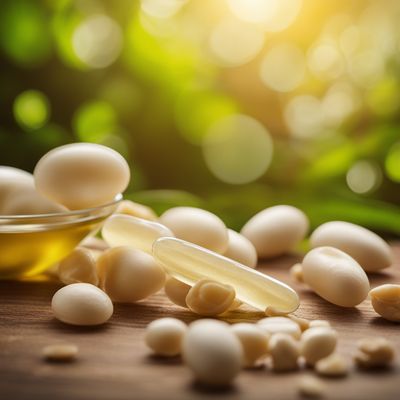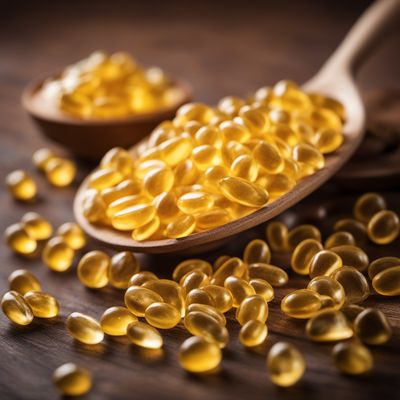
Ingredient
Vitamin B6 (pyridoxine, pyridoxamine, pyridoxal)
The Essential Nutrient Trio: Unveiling the Powers of Vitamin B6
Vitamin B6 is a water-soluble vitamin that exists in three forms: pyridoxine, pyridoxamine, and pyridoxal. It is involved in over 100 enzymatic reactions in the body, contributing to the metabolism of proteins, carbohydrates, and fats. This nutrient is essential for the production of neurotransmitters, such as serotonin and dopamine, which regulate mood and cognitive function. Vitamin B6 also supports the immune system, aids in the formation of red blood cells, and promotes healthy brain development. With a mild, slightly bitter taste, this vitamin is typically found in various foods, including poultry, fish, whole grains, nuts, seeds, and legumes. It is also available as a dietary supplement.
Origins and history
The discovery of vitamin B6 dates back to the 1930s when scientists identified a substance that prevented skin inflammation in rats. Later, it was recognized as a complex of three compounds: pyridoxine, pyridoxamine, and pyridoxal. These compounds were found to be essential for human health, and their importance in preventing deficiency-related conditions, such as anemia and dermatitis, was established. Over time, research has unveiled the numerous roles and benefits of vitamin B6, solidifying its significance in nutrition and health.
Nutritional information
Vitamin B6 is a powerhouse nutrient, providing essential support for numerous bodily functions. It aids in protein metabolism, promotes brain development, and supports a healthy immune system. A 100-gram serving of chicken breast contains approximately 0.5 milligrams of vitamin B6, contributing to the recommended daily intake of this nutrient.
Allergens
There are no known allergens associated with vitamin B6.
How to select
When purchasing foods rich in vitamin B6, such as poultry, fish, or whole grains, look for fresh, high-quality products. Choose chicken breasts or fish fillets that are firm, moist, and free from any unpleasant odors. For whole grains, opt for intact, unprocessed varieties and check for any signs of spoilage or insect damage.
Storage recommendations
To maintain the freshness and quality of foods containing vitamin B6, store them properly. Poultry and fish should be refrigerated at temperatures below 40°F (4°C) and consumed within a few days. Whole grains, nuts, and seeds should be stored in airtight containers in a cool, dry place to prevent moisture and insect infestation.
How to produce
Vitamin B6 cannot be directly produced by amateurs as it is a naturally occurring nutrient found in various foods. However, individuals can ensure an adequate intake of vitamin B6 by incorporating foods rich in this nutrient into their diet or by taking vitamin B6 supplements under the guidance of a healthcare professional.
Preparation tips
To maximize the vitamin B6 content in foods, it is best to cook them using gentle methods such as steaming, baking, or sautéing. Boiling can cause some loss of this water-soluble vitamin. Incorporate vitamin B6-rich ingredients into stir-fries, salads, soups, or grain bowls to enhance their nutritional value. Additionally, consider pairing foods high in vitamin B6 with a source of vitamin B12, as these two nutrients work synergistically in the body.
Culinary uses
Vitamin B6 is not typically used as a standalone ingredient in culinary applications. However, foods rich in this nutrient, such as chicken, fish, whole grains, nuts, and seeds, are commonly used in various dishes and cuisines worldwide.
Availability
Vitamin B6-rich foods are widely available in most regions and countries. Poultry, fish, whole grains, nuts, and seeds can be found in grocery stores, supermarkets, and farmers markets.
More ingredients from this category » Browse all

Vitamin A (retinol, carotenoids)
The Vision Booster

Vitamin B2 (riboflavin)
The Radiant Nutrient

Vitamin B3 (niacin, niacinamide)
The Essential Nutrient: Unveiling the Power of Vitamin B3

Vitamin D (cholecalciferol, ergocalciferol)
"The Sunshine Vitamin: Unlocking the Power of Vitamin D"

Vitamin B5 (pantothenic acid)
The Essential Nutrient: Unveiling the Power of Vitamin B5

Vitamin B1 (thiamine)
The Essential Energy Booster

Vitamin B9 (folic acid, folinic acid)
The Essential Nutrient for Cell Growth and Development

Vitamin K (phylloquinone, menaquinones)
The Mighty Nutrient: Unveiling the Power of Vitamin K

Vitamin B7 (biotin)
The Beauty Vitamin: Unveiling the Wonders of Biotin

Vitamin C (ascorbic acid)
The Immunity Booster: Unveiling the Power of Vitamin C

Vitamin B12 (cyanocobalamin, hydroxocobalamin, methylcobalamin)
The Essential Vitamin: Unveiling the Power of B12

Vitamin E (tocopherols, tocotrienols)
The Antioxidant Powerhouse